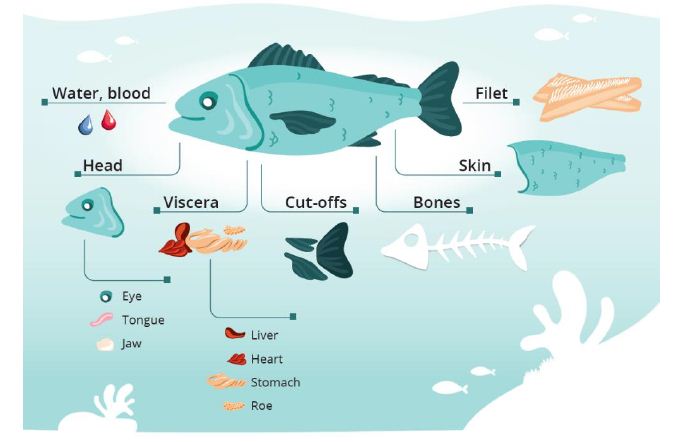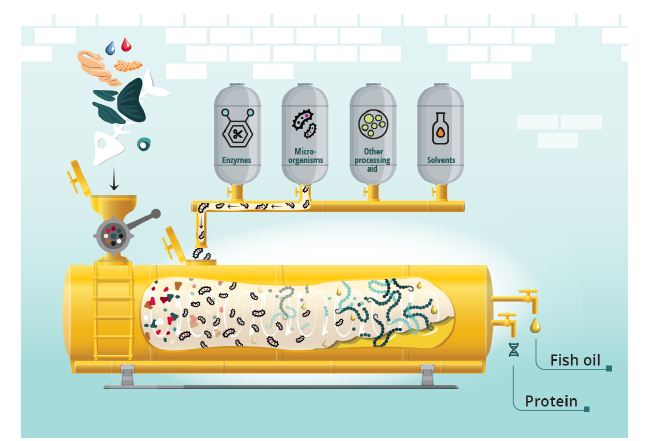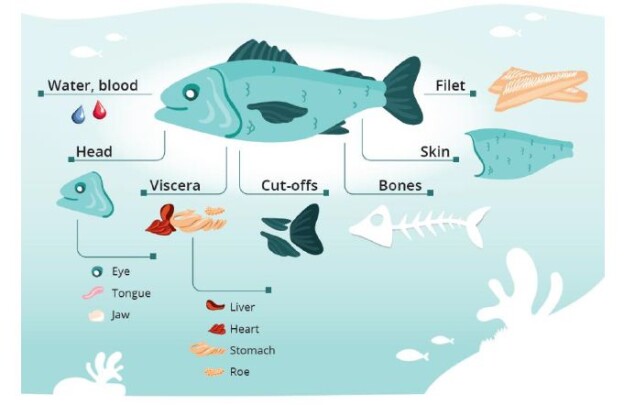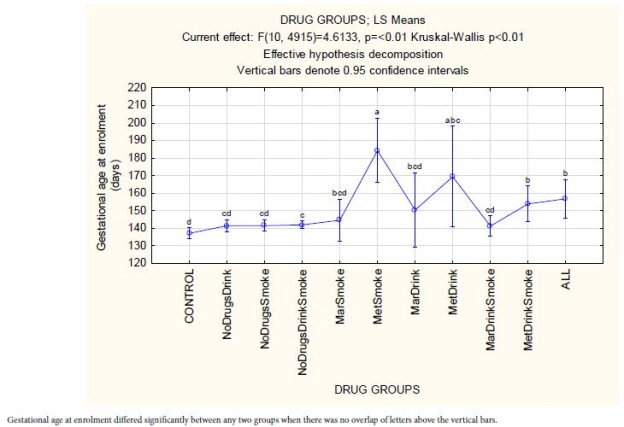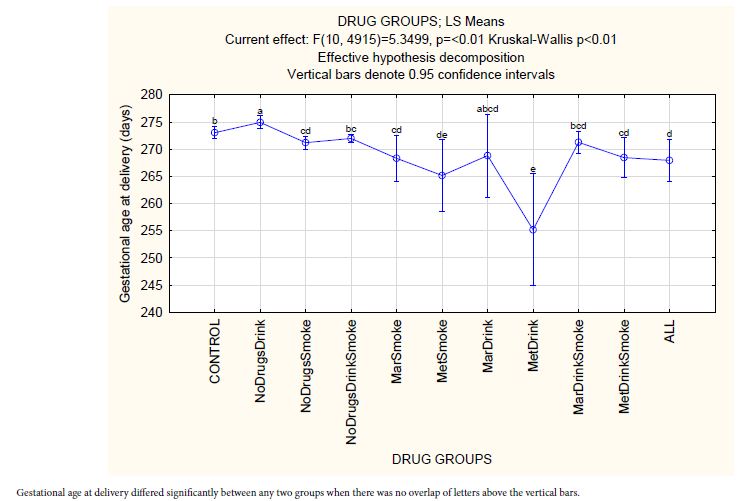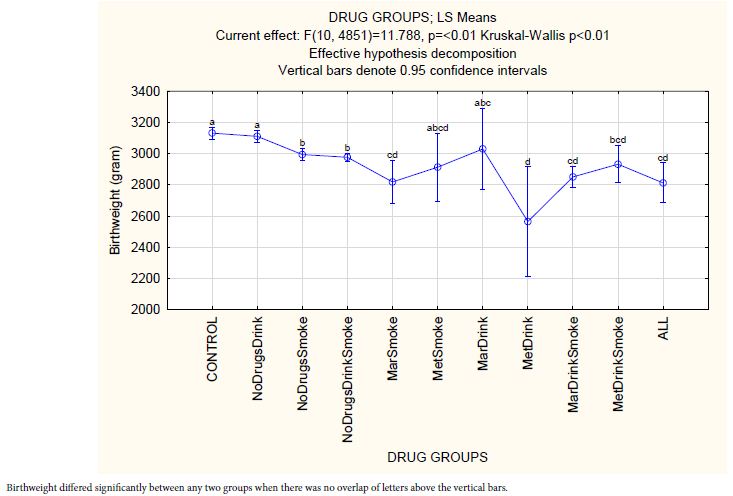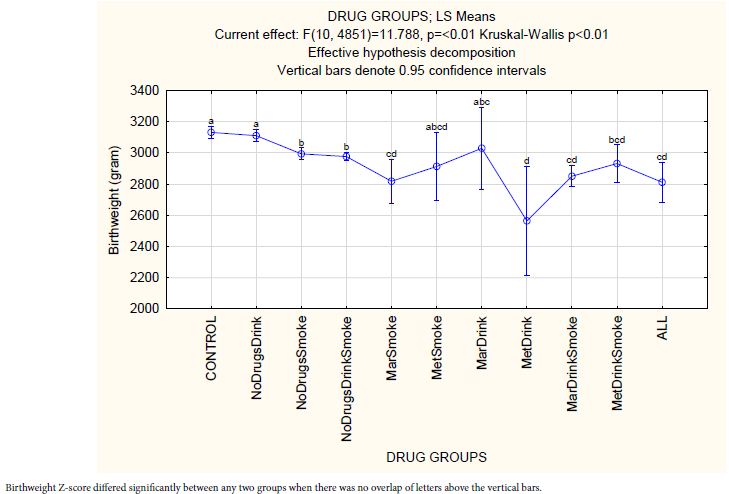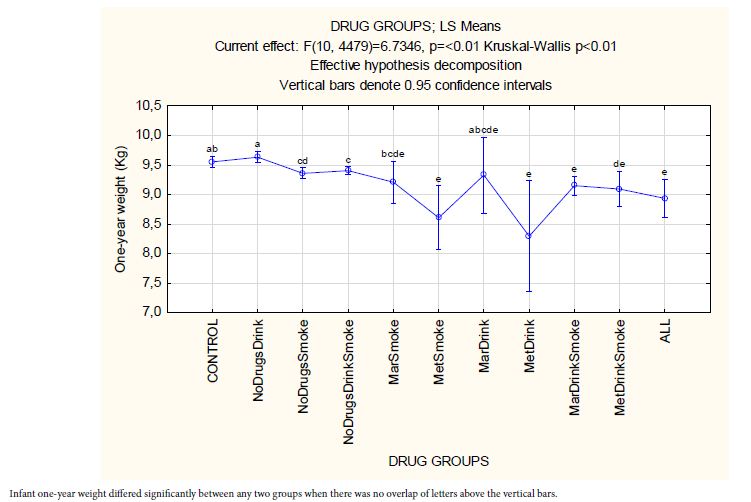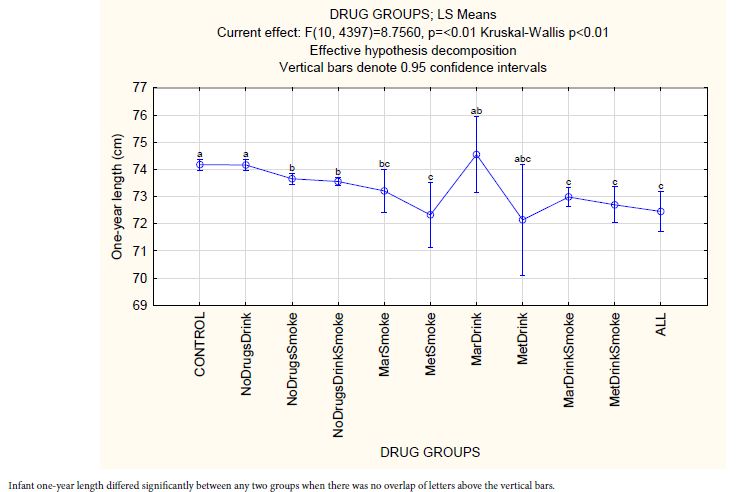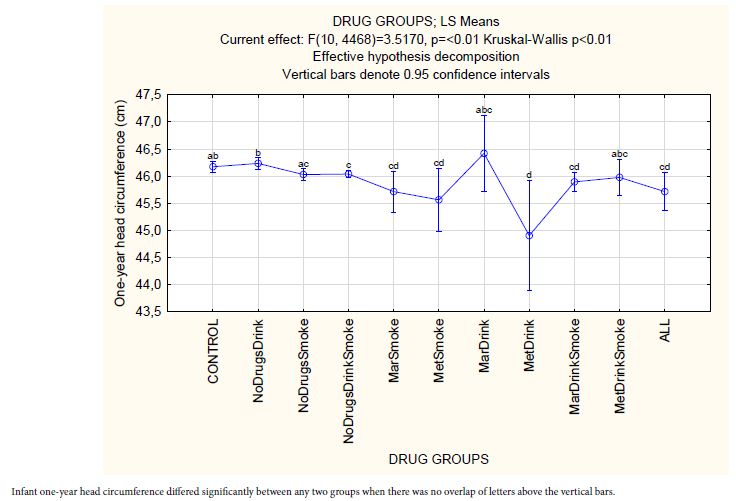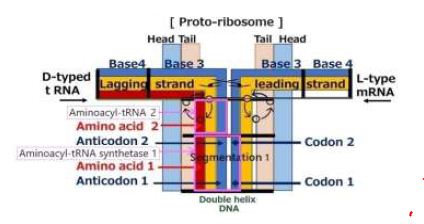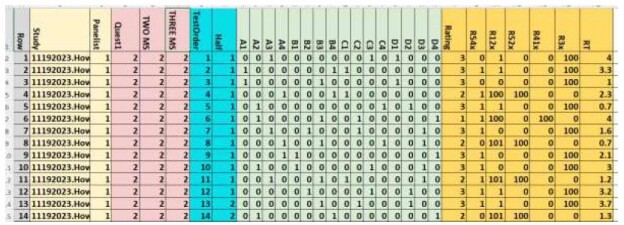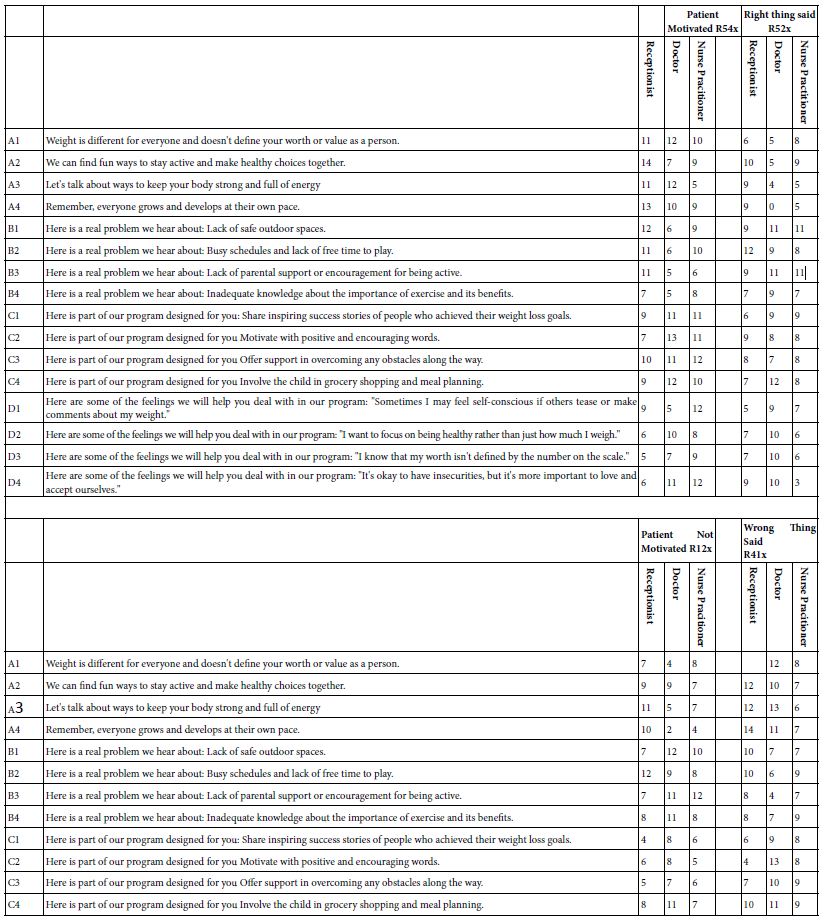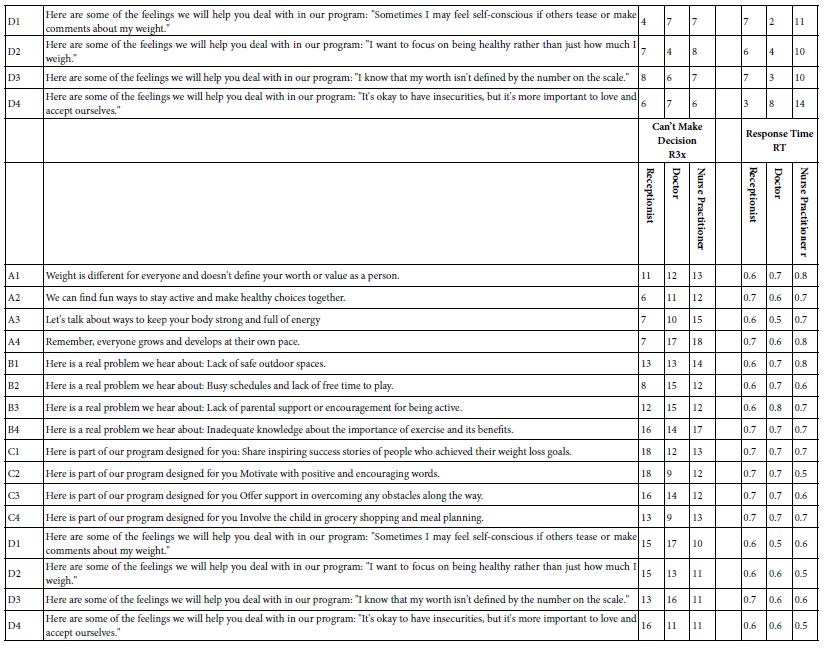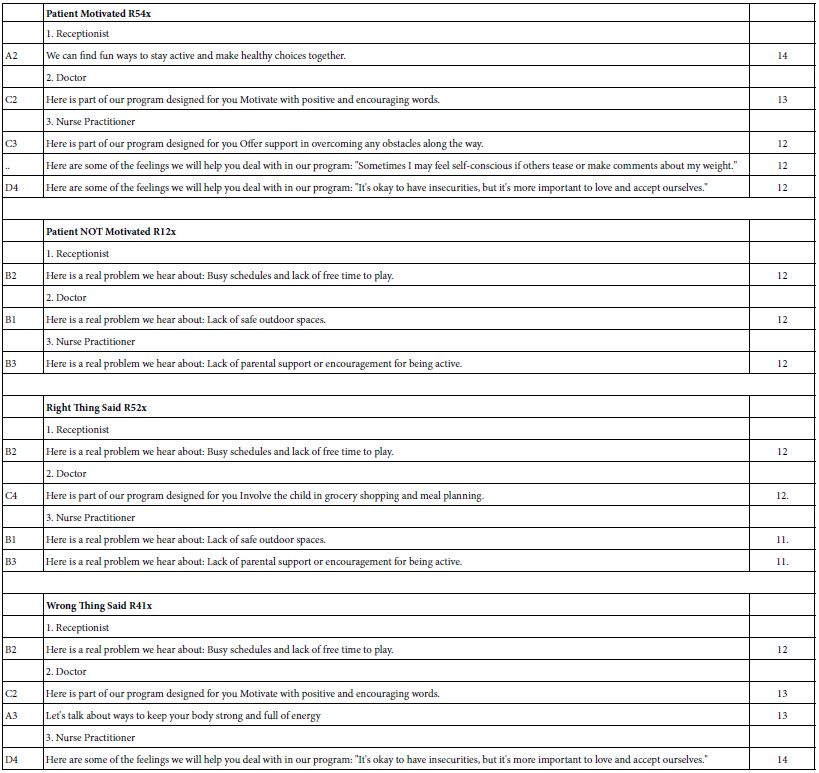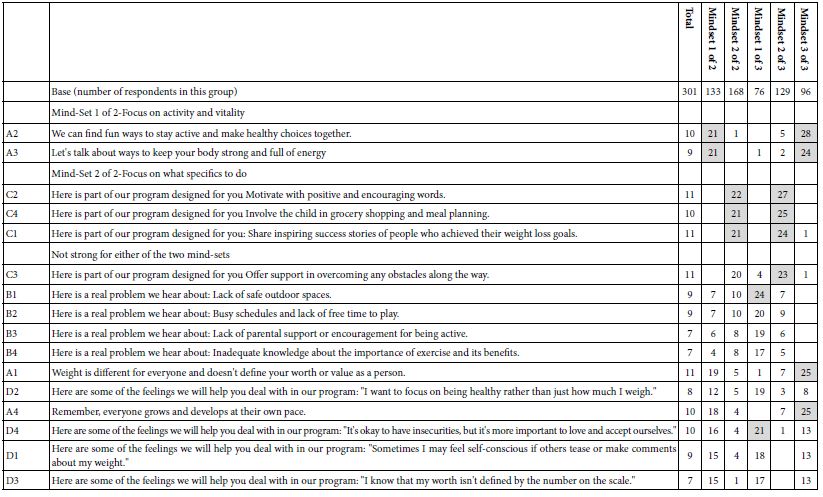DOI: 10.31038/ASMHS.2023722
Abstract
Both listening and reading comprehension have not been sufficiently studied in the context of Arabic and English language orthographies. The main goal of the current research was to investigate how listening and reading comprehension among native Arabic speakers predict the use of Arabic and English language orthographies in learning English as a foreign language (FL) in Israel. The Arab minority in Israel learn three languages: Arabic as their first language (L1), Hebrew as the language of the state of Israel (L2), and English as a foreign language (FL). Consequently, the dissimilarity between Arabic and English orthographies poses several challenges in learning English as a foreign language among Israeli Arab students. Arabic and English are alphabetical writing systems but represent different orthographies. A total of 100 Arabic-speaking high school students were asked to administer a set of phonological, linguistic, and cognitive scales. The results of the present study indicated that predictors of listening and reading comprehension in Arabic and predictors of listening and comprehension in English are different. Another finding of the present study was that predictors in Arabic language predict listening and reading comprehension in English. However, the Arabic skills predictors for listening comprehension are different than the Arabic skills predictors for reading comprehension. The results are discussed in light of previous findings in the literature as well as in relation to the different orthographies of Arabic and English languages.
Keywords
Reading comprehension, Listening comprehension, Two different orthographies, First and foreign languages
Introduction
The present research examines the Arabic and English language orthographies and their effect on listening and reading comprehension among Arab learners of English as a foreign language in Israel. Arabic and English are alphabetical language systems but differ in many aspects. This research aims to focus on the difference between Arabic and English orthographies, which lies within the relationship between the sound and letters also known as orthographic depth. Therefore, this research aims to clarify how listening and reading comprehension among Arabic speakers predict the use of these two abilities in English as a foreign language. The novel aspect of this research is examining listening and reading comprehension among Arabic learners of English in relation to their different orthographies in one study. It is expected that the characteristics of English and Arabic orthographies may not affect linguistic skills, as learners with different orthographic backgrounds adapt distinct linguistic skills to learn the language. Additionally, the learners’ performance in listening and reading comprehension may be lower in English compared to Arabic, considering the distinct characteristics of Arabic and English orthographies.
By studying Arabic and English language orthographies among Arabic learners in Israel, we can better understand the process of how learners with different orthographic backgrounds learn a language. In this paper, the uniqueness of the Arabic and the English language orthographies and their features and role in listening and reading comprehension will be discussed in depth. Subsequently, the research methodology and procedure will be presented. Finally, the findings will be analyzed followed by the discussion, conclusions, and limitations of the study.
Literature Review
Few studies have investigated the role of listening and reading comprehension in the first language as a predictor of linguistic skills in another language [1,2]. Listening comprehension and reading comprehension are similar skills but constitute two distinct forms of comprehension involving different cognitive processes [3-7]. Listening comprehension depends on an understanding of a spoken language while reading comprehension depends on an understanding of a written language [8]. While reading comprehension depends on decoding skills, which are predicted by phonological awareness, listening comprehension depends on word processing and is predicted by vocabulary knowledge [9]. Aspects of language processing and skills, namely Arabic orthography, English orthography, reading comprehension, listening comprehension, transfer of skills, phonological decoding skills, spelling, morphology and vocabulary, syntax, speed of processing, orthographic knowledge, working memory, attitudes and language, will be deeply explored in order to investigate predictors of listening and reading comprehension in both Arabic and English, two different orthographies.
Arabic Orthography
The Arabic language is a Semitic language, and it has 28 letters, including six vowels: three short vowels and three long vowels [10]. The short vowels are presented by diacritic marks above or beneath the letter [11], while long vowels are represented by the following letters: “alef,” “ya,” and “waw” [12]. Short vowels in Arabic add phonological information for word decoding and thus contribute to understanding texts [13,14]. In other words, the short vowels contribute to the correct pronunciation of Arabic sounds and letters [15]. This language is read and written from right to left and is regarded as shallow orthography that exhibits a predictable relationship between letters and sounds [16]. As a result, the development of literacy skills such as reading and spelling are learned quicker than in inconsistent orthographies [17]. In addition, the Arabic language is regarded as deep orthography when unvowelized [14,18,19]. In Arabic, short vowelization contributes to reading comprehension of less complex texts, such as informative and narrative texts and newspaper articles among readers of different ages and levels [20,21] reviewed the role of vowelization in Arabic and showed that short vowelization improves reading accuracy and reading comprehension. Other studies by [13,16,22,23] proved that Arabic orthography poses an intensive visual burden and slows down reading and can be considered as deep orthography. Therefore, reading in Arabic depends on the visual orthographic representation of a word. Furthermore, Arab readers after the fourth grade are expected to learn and read unvowelized texts in which they tend to rely on sentence context [13].
It is interesting to note the phenomenon of diglossia in the Arabic language, which refers to the use of two versions: spoken Arabic and literary Arabic [13,24,25]. Spoken Arabic has various dialects, and native Arabic speakers use spoken Arabic in everyday life, but literary Arabic is used in education, writing, the Qur’an, and literature [13,22,25,26]. Spoken and literary Arabic vary considerably in terms of phonology, vocabulary, syntax, and grammar and thus affect language development and reading acquisition [11,14,15,29]. This phenomenon also affects reading and writing in Arabic as it has negative effects on phonological awareness that is associated with reading and spelling acquisition [26].
English Orthography
The English language has 26 letters, including 5 vowels and 21 consonants, and it is read and written from left to right [10]. The vowels in English are letters within the words and represent the sounds [28]. Some letters are written in a word but not pronounced as they are spelled, which is more common in English than in Arabic [26,29]. English is also an alphabetical system characterized by an indirect relationship between a letter and its sound [16]. Therefore, English is regarded as deep orthography, in which the same letter may have various sounds written differently [10,30]. For example, the grapheme-phoneme “gh” is pronounced differently in the following words “ghost,” “light,” and “tough.” As a result, the rate of reading development in English is low among children in comparison with more consistent orthographies [30,31].
Second and foreign language learners tend to use L1 linguistic skills and learning strategies to learn another language according to the language linguistic skills transfer [28,32]. Although English and Arabic are alphabetical systems, the degree of dissimilarity of their orthographic representation affects learning English as a foreign language by Arabic-speaking learners [14]. According to the orthographic depth hypothesis, in deep language orthography, semantic context (lexical) is used for word recognition, while shallow language orthography relies on the phonology for decoding words [11,10]. In the case of the Arabic language, which is a shallow orthography, Arabic-speaking learners of English rely on consonants in word decoding for word recognition [33]. However, in the English language, the corresponding spelling-to-sound is inconsistent, and thus learners must rely more on activating both phonological and orthographic processes in learning and reading [34]. A more recent study by [8] shows that in deep orthographies, word recognition is the main predictor of reading comprehension, especially in an early stage of reading development, while in shallow orthographies listening comprehension is more significant in reading comprehension in different phases of reading development.
Reading Comprehension
Scholars have widely investigated reading comprehension in first and second languages [8,15,11,35,36]. Numerous studies explored reading comprehension and demonstrated that it is a determinant of reading accuracy [8,10]. Reading comprehension of written texts is the outcome of decoding and listening comprehension [1,14,36,37]. It also refers to the ability to extract meaning from written representations of the language in order to construct new meanings by activating previous knowledge [15,25]. The two foundational skills of reading comprehension are word recognition, which refers to the ability to read individual words accurately, and listening comprehension [8]. In a more recent study, word recognition highly contributes to reading comprehension among beginner readers, and listening comprehension appears strongly to correlates with advanced readers [36]. Previous studies also found that vocabulary contributes to reading comprehension [35,37].
It is important to note that these skills of reading comprehension may function differently according to the orthographic features of the language. In shallow orthographies, learners depend more on phonology and the high consistency of the sound and letters in word recognition and word learning [11,38]. In contrast, in deep orthographies, learners must learn the complexity of the low consistency of the sound and letters in word recognition [11,38]. In addition, word recognition appears to be a predictor of reading comprehension in deep orthographies while listening comprehension appears to be a determinant predictor of reading comprehension in shallow orthographies [8]. In deep alphabetic orthographies, learners depend on increased word processing skills, such as phonetic awareness, letter-to-sound relationship, and visual representation of the word in ESL reading comprehension compared to less deep alphabetic orthographies [38].
Listening Comprehension
Listening comprehension is critical for language acquisition and reading comprehension and also has a significant role in the communication and language learning process [18,34,39]. However, unlike reading comprehension, listening comprehension has failed to attract the attention of language researchers [7,34], despite the rise of audio-visual platforms, such as TV and computers among children and adolescents. Listening comprehension refers to the ability to construct the meaning of spoken language and relate it to previous knowledge [8]. The literature review shows that the process of listening comprehension involves several key components, including word recognition, syntax, vocabulary, speed of talk, and previous knowledge that impact listening comprehension [18]. Unlike reading comprehension, the process of listening comprehension poses a major challenge for learners, as it requires rapid processing of meaning and linguistic skills, including syntax and lexical, due to the transient and temporary nature of the spoken text [36,40]. The contribution of listening comprehension to reading comprehension increases with age while decoding decreases as readers become increasingly proficient in decoding as they get older [14,34,35]. Vocabulary is the most important component of listening comprehension [7,35].
Little research has been done on listening comprehension in L1 and its role in predicting later language skills in a second language [34,36]. [39] has suggested that pre-listening activities and repetitive listening to a passage enhance listening comprehension and contribute to language proficiency among learners of Arabic as a foreign language. Because Arabic is a diglossic language, listening comprehension is reportedly affected by the spoken language as it relies on oral language [14]. Additionally, short vowels in Arabic contribute to listening comprehension across all grade levels [18]. However, the role of spoken language and listening comprehension across a variety of languages is still unclear [8].
A closer look at the literature on listening comprehension and reading comprehension, however, reveals a number of gaps and shortcomings. Therefore, this research addresses the need for an in-depth examination of the predictors of listening and reading comprehension in different orthographies among Arabic-speaking learners of English as a FL.
Transfer of Skills
Cummins’ (1991) linguistic interdependence hypothesis suggests a relationship between the first language and the learning of the second language. This relationship is indicated in the transfer of language skills, including phonological awareness, word recognition, reading comprehension, and other linguistic skills between languages [31]. This hypothesis depends on language-independent skills, such as phonology, morphology, and syntax that transfer across languages [11,34]. Studies on the role of listening comprehension and the transfer of this skill from L1 to reading comprehension in L2 are rare however [34]. Most studies have focused on language linguistics skills transfer, including reading, spelling, and phonological awareness and have neglected oral language skills transfer [2,16,34,41]. The transfer of skills across languages, either first to second\foreign language or in the opposite direction has been widely investigated by researchers [11,16,27]. In a study that investigated the transferability of phonological awareness in opposite direction, from L2 to L1, it was found that improvement in linguistic and meta-linguistic skills in a second language positively influenced similar skills in L1 [41]. It is interesting to relate that the transfer of linguistic and language skills is affected by the degree of similarity between the two languages [11,34,38]. As a result, a high degree of similarity between L1 and L2 enables the transfer of language skills, while distinct orthographic backgrounds of L1 and L2 affect decoding efficiency and word learning [42]. Despite decades of research, this issue continues to be debated regarding the transfer of linguistic skills across different languages [11,15,27,28,41].
Phonological Decoding Skills
Phonological awareness is one of the most researched basic meta-cognitive linguistic skills in language learning, and it refers to the awareness of the sound structures of language units [24,41]. Most studies, early as well as current, have demonstrated the importance of phonological awareness in predicting high performance in the reading process across languages [11,15,24]. A study of reading-disabled Arabic-English bilingual Canadian children showed that they scored higher scores in phonological tests than monolingual English-speaking children, despite the different nature of the two orthographies [28]. However, some studies have assumed that the degree of similarity of orthographic systems between L1 and L2 influence the learners’ performance in phonological decoding and word learning in L2 [42]. In another study, it was noted that differences in the orthographic background between L1 and L2 might affect phonological processing and word decoding in L2 [2]. In a recent study, an intervention program in English for improving linguistic and meta-linguistic skills in Hebrew as L1 and English as FL indicated a significant improvement in most skills, including phonological awareness from pre-intervention to post-intervention among three groups of readers: dyslexic, poor, and normal readers [10]. In short, phonological awareness is a cross-language skill; with increased exposure and practice of the target language, learners may be able to become more skilled in phonological skills [2,11].
Spelling
Spelling skills refer to the visual representation of a spoken language and depend on other language skills, such as phonology, orthography, and morphology of the target language [38,43]. Spelling involves two significant processes: phonological awareness and alphabetic knowledge that influence the ability in learning to read, write, and spell [2,44]. In a study by [33], Japanese poor readers revealed high performances in recognition tasks compared to Russian readers, due to their L1 experience with kanji (logographic Japanese writing system). Likewise, [28] proved that spelling is a cross-language correlated skill among Arabic-English disabled bilingual readers. The varying degree of orthography between languages affects the development of reading and spelling, as deep orthographies impede spelling skills compared to shallow orthographies [43]. The orthographic features of the Arabic language pose difficulties in spelling and reading among learners considering the diglossic situation and when Arabic is unvowelized [26]. More current research also has indicated that spelling needs direct instruction in the target language, supporting the fact that each language has its own orthographic rules and system [27]. Therefore, it is critical in this study to thoroughly examine spelling skills in both the Arabic and English languages.
Morphology and Vocabulary
English and Arabic have different morphological systems and features [21,22]. Arabic is a Semitic language characterized by root and pattern in which vowels determines the meaning of the word [12,16]. In contrast, English is characterized by semantic stem and morphemes (prefixes and suffixes), which allows the recognition of the meaning of the word [10]. Shallow orthographies are often complicated morphological systems while deep orthographies are less complicated [15,11]. As a result, it is assumed that it should be easier to transfer morphological skills from complex morphological systems like Arabic compared to English but the studies have proved that morphological skills are cross-language transferable [15,11]. In addition, vocabulary contributes significantly to both reading comprehension and listening comprehension [7,35]. The processing of information in listening comprehension is less focused on the vocabulary as the spoken text has a limited time frame, in contrast to reading comprehension, in which the text is permanent, allowing the reader to decode the meaning of the written text [40]. It is critical to deeply explore the role of morphology and vocabulary in predicting listening and reading comprehension both in Arabic and English and their influence among adult learners.
Syntax
Language syntax refers to the understanding of sentence structures and word order [28,35,45]. Moreover, syntax is a transferable linguistic skill across languages and contributes to improvement in both languages despite their different orthographies [11,15,41]. In a recent study, it was reported that syntax relates to reading comprehension and improvement in syntax contributes positively to reading comprehension among L2 learners of English [35]. Additional studies to better understand the role of syntax skills in language learning are needed.
Speed of Processing
The varying degree of orthography between languages affects both reading speed and comprehension [41]. In a study by [45], differences in reading were apparent among Hebrew L1 speakers when reading Hebrew and English passages. Despite Hebrew being their L1, they were more proficient in reading in English. In another study, [21,22] demonstrated that the complexity of Arabic orthography affects word identification and letter processing when compared to Hebrew. Thus, the participants demonstrated low performance in Arabic tasks in comparison to similar tasks in Hebrew. Other findings suggest that language orthography is not a direct indicator of reading comprehension levels and that reading speed is not significant in the prediction of reading comprehension. For example, a study by [6] revealed that oral comprehension is the strongest predictor of reading comprehension rather than reading speed and accuracy in Italian. Likewise, [8] suggest that listening comprehension was the best indicator of reading comprehension in comparison to oral reading fluency and word recognition in European Portuguese. Therefore, other components rather than speed seem to increase reading comprehension levels. However, the research is limited on the role of speed and its contribution to reading comprehension and listening comprehension. Thus, the speed of processing issue is still debatable and future research should be conducted.
Orthographic Knowledge
The ability to recognize written orthographic symbols of a language helps in understanding written texts or in identifying words known as orthographic knowledge [10,11,15,27]. Both Arabic and English are alphabetical orthographies, but they vary considerably in the consistency of the relationship between letters and sounds [5,29]. This variance refers to the consistency between the graphic symbol and the sound of each writing system of a language [10,29]. In other words, this variance is known as orthographic depth and has an impact on the process of reading and learning a language [5,10,11,14,30]. Orthographic depth represents the degree of sound-symbol correspondence [38]. Arabic seems to be more consistent and it is considered shallow orthography when vowelized and deep orthography when unvowelized [11,16], while English seems to be the least consistent alphabetic writing system and is considered deep orthography [16,28,30].
A large number of existing studies have examined the cross-language transfer of orthographic skills [10,11,15,16,27,28]. However, the existing research remains inconclusive on whether orthographic skills are cross-language or language-specific. Previous studies have shown that bilingual Arabic and English-speaking children performed better in pseudo-word reading and spelling tasks than monolingual English speaking children, which reflects a positive transfer from Arabic to English [28]. Recent work has proved that orthographic skills are cross-language transferable from English to Hebrew after an intervention program in English [31]. However, other studies have found that orthographic knowledge is language-specific and thus unlikely to be transferred from one language to another [16,41]. Another study also reported that orthographic knowledge is language specific and cannot be transferred from L2 to L1 among poor readers in the experiential group [11]. In addition, no significant improvement in orthographic skills both in Arabic and Hebrew was apparent after the intervention program in English L3 [15]. A more recent study confirmed that orthographic differences in languages influence the acquisition of linguistic and meta-linguistic skills, as orthographic knowledge did not show significant improvement in Hebrew following an intervention program for EFL among dyslexic, poor, and normal readers in the experimental group [10]. Therefore, it is crucial to investigate orthographic skills more extensively in order to understand their contribution and transferability across languages.
Working Memory
According to [28,45], working memory in reading refers to the capacity to retain information within the short-term memory storage while processing information. The study of bilingual Arabic-English Canadian children by [28] found that working memory is correlated across languages despite different orthographies. Furthermore, a study by [46] revealed that basic visual memory is significant in the process of reading Arabic as well as Hebrew, but not English. More recent research suggests that shallow and deep orthographies impact the performance of reading and writing as shallow orthographies are less memory dependent [43]. According to [3], short vowels in Arabic add phonology to words, which help in saving information in working memory to understand written or read aloud texts. This approach remains briefly addressed in the literature. Therefore, more research is needed on working memory skills and their contribution to learning a language in different orthographies.
Attitudes and Language Acquisition
The educational system in Israel requires the Arab minority to learn three languages in schools: Arabic as their first language, Hebrew as a second language, and English as a foreign language [16,15]. Attitudes toward language acquisition and its effect on learning Hebrew and English among the Arab minority in Israel have been widely investigated by [22,47]. Abu Rabia showed that instrumental and integrative attitudes motivate learners to learn the target language. The instrumental attitude suggests that learners learn the target language for practical reasons such as academic studies, while the integrative attitude suggests that learners identify with the target-language group and are willing to learn its language [22,47]. Many researchers claim that positive attitudes toward a language can facilitate the learning of the target language [48,49]. In addition, teachers play a significant role in developing positive attitudes toward that target language [49]. Other studies have suggested both motivation and attitude in language learning have a direct effect on learning a language [49,50]. Further research has pointed out that two types of motivation—integrative motivation and instrumental motivation—promote successful learning of the target language with emphasis on integrative motivation in maintaining long-term success [51,50]. This study is intended to examine attitudes toward learning English as a foreign language, among Arab high school students in Israel. Investigating this variable can contribute significantly to the researched topic.
Research Questions
This study has two research questions:
- How are listening and reading comprehension predictors in Arabic distinct from comprehension predictors in English?
- To what degree do language skills in Arabic predict listening and reading comprehension in English?
Both research questions are based on the literature review and the need to investigate the issue of listening and reading comprehension among native Arabic speakers in language acquisition.
Research Hypotheses
- Orthographic differences between Arabic and English suggest distinct predictors between listening and reading comprehension in Arabic as the first language and listening and reading comprehension in English as a foreign language.
- Considering the characteristics of English and Arabic orthographies, listening and reading comprehension in deep orthographies will predict lower performances.
Methodology
This section addresses the methods and research tools used. This study used the quantitative approach. The quantitative research paradigm therefore assumes that knowledge is “there,” waiting to be revealed, and it is the role of researchers to be “objective” and not to allow their attitudes, values, and beliefs to affect the research process. Epistemologically quantitative research is deductive and confirmatory (Friedman, 2013).
Research Participants
The study sample included 100 intermediate-advanced high school students (50 male students and 50 female students) aged 16-17. The selection criterion was based on a random sample from classrooms doing the four and five level unit English Bagrut (Israel’s high school matriculation exams). The sample was recruited from a high school in the northern district of Israel. All students were native Arabic speakers learning in an Arabic school, in which the teaching language is Arabic, Hebrew is learned as a second language, and English as a third language.
Research Tools
The following tests and tasks were administered (see Appendix A). All of the tests were built especially for this study except for the working memory test in Arabic and vocabulary test in English and Arabic.
1. Phonological Awareness Test in English and Arabic: Both versions were adapted from Morais, Cary, Alegria, and Bertelson (1979). Phonological awareness was tested by phoneme deletion. The participants were presented with 20 items and then asked to delete a phoneme from the beginning, the middle, or the end of a word. For example: repeat the word /jump/ without /j/. The percentage of correct responses out of the total was calculated for each participant.
2. Word Identification Test in English and Arabic: The English version was a subtest of the Woodcock Reading Mastery Test created by Woodcock (1973). Each participant was asked to read 40 words aloud in the English version and 30 words in the Arabic version (based on Arabic readers used in Arab high schools in Israel), which were listed in increasing order of difficulty. The percentage of correct responses out of the total was calculated for each participant.
3. Working Memory Test in English and Arabic: Both versions were adapted from the English version developed by Siegel and Ryan (1989). Participants were asked to fill in the missing words in sentences presented orally. Then they had to remember the words and repeat the missing words from that set in the correct order. There were a total of 12 sets of sentences (lengths ranging from 2 to 5 sentences). Examples are: In summer it is very ______, People go to see monkeys in a _______. The percentage of correct responses out of the total was calculated for each participant.
4. Orthographic Knowledge Test in English and Arabic: Both versions were adapted from the English version developed by Olson, Kliegel, Davidson, and Foltz (1985). The participants were presented with 20 homophonic pairs of words and in each pair, they were asked to mark the corrected spelled word. Examples of these pairs include /all-oll/. The percentage of correct responses out of the total was calculated for each participant.
5. Morphological Knowledge Test in English and Arabic: Both versions were inspired by Kahn-Horwitz (2006). The participants were presented with 10 sentences, and they were asked to fill in the missing word in the sentence from a list of words from the same family of words beneath each sentence in each version. For example, the boy eats (quick/ quickly/quickable). The percentage of correct responses out of the total was calculated for each participant.
6. Syntactic Judgment Test in English and Arabic: The tests appeared in Author and Sanitsky (2010) and Santiskty (2013). The participants were presented with 10 sentences and were asked to decide whether the sentence’s syntax was correct or not. For example, the girl reading a book. The percentage of correct responses out of the total was calculated for each participant.
7. Spelling Test in English and Arabic: Both versions are adapted from the English WRAT-R spelling tests (Jastak & Wilkinson, 1984). This skill was tested through dictation. The participants were asked to write down 40 words correctly in increasing levels of difficulty as they were read aloud. The list of words in English were taken from Band III core word list in the Israeli English Curriculum, such as the word /natural/. The list of words in Arabic were selected from the Arabic readers used in Arab high schools in Israel, such as the word /مبادئ/. The percentage of correct responses out of the total was calculated for each participant.
8. Reading Comprehension Test in English and Arabic: The tests appeared in Author and Sanitsky, (2010) and Sanitisky (2013). The participants were asked to read a text that was followed by 10 multiple choice comprehension questions. In the English version, the text was taken from the Bagrut examination in English (Module E) for four and five unit levels. In the Arabic version, the text was taken from the Bagrut examination in Arabic. The percentage of correct responses out of the total was calculated for each participant.
9. Listening comprehension Test in English and Arabic: Both versions were adapted from [34]. The listening comprehension in English was taken from the Bagrut examination in English (Module E) for four and five unit levels in English. The listening comprehension in Arabic was taken from a recorded TV news interview in Arabic. In both versions, the participants answered 10 multiple choice questions after they listened to passages. The percentage of correct responses out of the total was calculated for each participant.
10. Vocabulary Test in English and Arabic: Both versions were adapted from the English version of The Peabody Picture Vocabulary Test, (3rd edition) developed by Dunn and Dunn (1997). The vocabulary task measured receptive vocabulary. The students were shown four different pictures and were asked to point at the one matching the target word. For example, when the students heard the word bell, they had to point at the picture that matches the word they heard. The percentage of correct responses out of the total was calculated for each participant.
11. Speed Test in English and Arabic (for listening): The test consisted of three parts with three different texts in each part. The first part was quick reading, the second part was medium-paced reading, and the third was slow reading. In each part, the students were asked to answer 10 multiple-choice questions. In the English version, the audios were taken from the Bagrut examination in English (Module E) for four and five unit levels. In the Arabic version, the audio was taken from a recorded TV news interview in Arabic The percentage of correct responses out of the total was calculated for each participant.
12. Attitudes toward the Language and Target Group: The test appeared in [23] The participants were asked to answer a questionnaire which tested a few constructs, such as integrative motivation: indoor integrativeness and outdoor integrativeness, instrumental motivation, and attitude toward the learning situation in class. Statements were asked about each construct and participants were expected to answer on a five levels Likert scale of 1 (strongly disagree) and 5 (strongly agree). The reliability was reported α= .86 which indicates a high reliability.
Research Procedure
The participants were tested in the school that they attended during the school day. Participants were tested individually and collectively by the researcher in quiet rooms. Some tests were carried out collectively like orthographic knowledge, morphological knowledge, syntactic judgment, spelling, reading comprehension, listening comprehension, speed, attitudes toward the language and target group, while other tests were carried out individually. All instructions were given in Arabic, L1. The testing was held in two sessions for each student. Each session lasted between 50-60 minutes. In each session, all tests were given in one of the two languages. The tests were administered in the following order: phonological awareness, word identification, working memory, orthographic knowledge, morphological knowledge, syntactic judgment, spelling, reading comprehension, listening comprehension, vocabulary, speed, and attitudes toward the language and target group.
Data Analysis
Descriptive statistics were calculated for all variables involved in this study (averages, standard deviations, ranges, in addition to Skewness and Kurtosis indices). In the next stage, correlations indices (Pearson’s correlation coefficient) within and across languages were conducted to analyze the relationships between variables in this study. Next, an analysis of variance using ANOVA/ Multivariate linear regression analysis was performed to determine whether there were significant differences between Arabic and English tests and which variables were important predictors of listening and reading comprehension in Arabic as the first language and listening for comprehension in English as a Foreign Language.
Results
In the first stage, the descriptive values will be given to the research variables, and in the second stage, the research hypotheses will be answered. The descriptive statistics for all variables involved in this study are presented in Table 1.
Table 1: ANOVA Test and Descriptive statistics between research groups: dyslexic, chronological age-matched group and reading level matched group.
|
|
|
A-Normal Readers-CA |
B-Dyslexic Students |
C-RL Controls |
F |
η² |
|
|
|
M |
S.D. |
M |
S.D. |
M |
S.D. |
| Reading ability
|
|
reading vowelized words |
33.60 |
4.40 |
12.50 |
3.22 |
11.23 |
2.67 |
385.005*** |
.898 |
|
reading un-vowelized words
|
32.97 |
4.95 |
14.33 |
3.01 |
12.47 |
2.08 |
305.120*** |
.875 |
| |
Working Memory
|
12.63 |
1.94 |
4.17 |
1.23 |
3.48 |
1.33 |
328.911*** |
0.884 |
| |
Orthographic processing
|
orthographic processing |
89.00 |
7.38 |
72.13 |
7.62 |
64.38 |
10.04 |
66.320*** |
0.607 |
| |
orthographic processing time (Sec.) |
399.40 |
68.94 |
451.53 |
87.60 |
465.21 |
70.76 |
6.155*** |
0.125 |
| |
Phonological awareness
|
phonological awareness 1 |
13.79 |
3.49 |
4.27 |
2.57 |
4.45 |
1.45 |
122.356*** |
0.744 |
| |
phonological awareness 2 time |
146.71 |
51.16 |
158.50 |
28.98 |
161.55 |
29.82 |
1.222 |
0.028 |
| |
phonological awareness 3 |
13.32 |
4.94 |
4.93 |
1.91 |
4.62 |
2.50 |
62.046*** |
0.596 |
|
morphological awareness
|
29.45 |
9.62 |
11.27 |
8.22 |
7.64 |
3.23 |
70.778*** |
0.622 |
|
morphological judgment |
19.73 |
0.64 |
16.53 |
2.74 |
16.69 |
2.85 |
18.265*** |
0.298 |
| |
Pseudo word decoding
|
pseudo word decoding |
21.27 |
2.70 |
9.93 |
3.02 |
9.69 |
2.47 |
173.721*** |
0.802 |
| |
pseudo decoding time (sec.) |
96.57 |
33.03 |
158.33 |
27.62 |
162.93 |
22.30 |
51.999*** |
.0547 |
| |
Spelling |
20.43 |
2.81 |
11.43 |
4.41 |
11.41 |
5.20 |
44.792*** |
0.510 |
| |
RAN Errors
|
RAN numbers L2 Error |
0.03 |
0.18 |
0.21 |
0.56 |
0.10 |
0.31 |
1.536 |
0.035 |
| |
RAN letters L5 Error |
0.37 |
0.85 |
0.62 |
0.82 |
0.66 |
1.42 |
0.649 |
0.015 |
| |
RAN objects L7 Error |
0.37 |
0.85 |
0.79 |
0.86 |
0.66 |
0.72 |
2.116 |
0.047 |
| |
RAN colors L9 Error |
0.53 |
0.73 |
0.86 |
1.03 |
0.86 |
1.19 |
1.076 |
0.025 |
| |
RAN Time
|
RAN numbers L2 Error |
28.77 |
9.19 |
29.00 |
5.50 |
32.55 |
4.28 |
2.956 |
0.064 |
| |
RAN letters L5 Error |
36.47 |
8.65 |
40.03 |
7.70 |
42.10 |
10.11 |
3.062 |
0.066 |
| |
RAN objects L7 Error |
47.20 |
8.06 |
44.77 |
6.01 |
47.45 |
5.87 |
1.444 |
0.032 |
| |
RAN colors L9 Error |
47.83 |
10.61 |
50.23 |
8.36 |
53.62 |
7.89 |
3.041 |
0.066 |
***p<.001
Testing the Study’s Hypotheses
Hypothesis 1
The first hypothesis was that orthographic differences between Arabic and English would suggest distinct predictors between listening and reading comprehension in Arabic as the first language and listening and reading comprehension in English as a foreign language. To test this hypothesis, in the first stage, we examined the correlation between the variables by using the Pearson coefficient. The coefficient correlation (Table 2) was calculated between the scores of reading comprehension, and listening comprehension with all the other linguistic skills, each separately, once within the Arabic language and another within the English language. The results indicate a statistically significant difference between the two languages.
Table 2: ANOVA Test and Descriptive statistics between level’s RAN tasks
|
|
numbers |
letters |
objects |
colors |
F |
η² |
|
|
M
|
S.D. |
M
|
S.D. |
M
|
S.D. |
M
|
S.D. |
| RAN errors by task type.
|
RAN Error |
.11 |
.38 |
.55 |
1.06 |
.60 |
.82 |
.75 |
1.00 |
11.545*** |
0.120 |
| RAN time by task type.
|
RAN Time |
30.08 |
6.83 |
39.51 |
9.07 |
46.46 |
6.76 |
50.53 |
9.25 |
239.362*** |
0.736 |
***p<.001
Table 2 shows the correlation coefficient between reading comprehension and listening comprehension, with Arabic/English Skills (variables), within every language. It shows that reading comprehension skills in both Arabic and English had a positive and significant correlation and had weak-medium intensity (.22, .35, respectively), with the phonological awareness skills. Also, listening comprehension skills in both Arabic and English were positively and significantly correlated and had weak-medium intensity (.26, .31, respectively), with the phonological awareness skills.
Reading comprehension in Arabic had no significant correlation with orthographic knowledge in Arabic, while the reading comprehension in English had a positive correlation, with weak intensity (.25), with orthographic knowledge in English. In contrast, listening comprehension skill in both Arabic and English had a positive and significant correlation and a weak-medium intensity (.22, .4, respectively), with the orthographic knowledge skills.
Reading comprehension in Arabic had no significant correlation with morphological knowledge in Arabic, while the reading comprehension in English had a positive correlation, with medium intensity (.53), with morphological knowledge in English. In contrast, the listening comprehension skills in both Arabic and English had a positive and significant correlation and a weak-medium intensity (.20, .52, respectively), with the morphological knowledge skills.
Reading comprehension skills in both Arabic and English had a positive and significant correlation and has weak-medium intensity (.25, .51, respectively), with the syntactic judgment skills. In contrast, listening comprehension in Arabic had no significant correlation with syntactic judgment in Arabic, while listening comprehension in English had a positive correlation, with weak intensity (.25), with syntactic judgment in English.
Reading comprehension skills in both Arabic and English had a positive and significant correlation and has weak-medium intensity (.24, .51, respectively), with the spelling skills. Also, listening comprehension skills in both Arabic and English was positively and significantly correlated and had weak-medium intensity (.21, .37, respectively), with the spelling skill.
Reading comprehension skills in both Arabic and English had no significant correlation with vocabulary skills. In contrast, listening comprehension in Arabic had no significant correlation with vocabulary in Arabic, while listening comprehension in English had a positive correlation, with weak intensity (.25), with vocabulary in English.
Reading comprehension skills in both Arabic and English had a positive and significant correlation and a weak-medium intensity (.22, .55, respectively), with the speed (0.75) skills. Also, listening comprehension skills in both Arabic and English had a positive and significant correlation and strong intensity (.74, .94, respectively), with the speed (0.75) skills.
Reading comprehension in Arabic had no significant correlation with speed (1.25) in Arabic, while reading comprehension in English had a positive correlation, with medium intensity (.44) with speed (1.25) in English. In contrast, the listening comprehension skills in both Arabic and English had a positive and significant correlation and a strong intensity (.89, .92, respectively), with the speed (1.25) skill.
Lastly, we should mention that listening and reading comprehension skills in both Arabic and English did not have any significant correlation with the word identification skills, working memory skills, and attitudes toward the English language.
In the second stage, the relationship between the variables was tested by adjusting multiple linear regression using the Stepwise method, to predict reading comprehension and listening comprehension skills in Arabic/English by skills in Arabic/English, respectively, as predictors. In other words, this stage sought to predict reading comprehension and listening comprehension skills in Arabic based on the other skills in the Arabic language, and then reading comprehension and listening comprehension skills in English based on the other skills in the English language as predictors.
The first dependent variable examined was reading comprehension. Table 3 contains the parameter estimates of the predictor’s variables—all the significant linguistic skills within every language.
Table 3: ANOVA Test and Descriptive statistics for reading time between research groups: dyslexic, chronological age matched group and reading level matched group.
|
|
A-Normal Readers-CA |
B-Dyslexic Students |
C-RL Controls |
F |
η² |
|
|
M
|
S.D. |
M
|
S.D. |
M
|
S.D. |
| Speed of processing in reading (Time).
|
orthographic awareness E time (Sec.) |
399.00 |
70.79 |
451.53 |
87.60 |
465.21 |
70.76 |
5.855*** |
0.122 |
| phonological awareness F time |
146.71 |
51.16 |
158.50 |
28.98 |
161.55 |
29.82 |
1.222 |
0.028 |
| pseudo decoding time (sec.) |
96.68 |
33.98 |
158.33 |
27.62 |
162.93 |
22.30 |
48.661*** |
.0537 |
| average time (sec.) |
214.13 |
30.44 |
256.12 |
34.64 |
263.23 |
32.33 |
18.873*** |
0.310 |
Table 3 shows that Phonological awareness and spelling skills in Arabic were significant (p<0.05) predictors of reading comprehension in Arabic. The predictors positively affected Reading comprehension in Arabic and were able to explain about 17% of the variance of reading comprehension in Arabic.
In Contrast, speed (0.75), syntactic judgment, and spelling skills in English were significant (p<0.05) predictors for reading comprehension in English. The predictors positively affected reading comprehension in English and were able to explain about 50% of the variance of reading comprehension in English.
The second dependent variable examined was listening comprehension. Table 3 contains the parameter estimates of the predictor’s variables—all the significant linguistic skills within every language.
Table 3 shows that Phonological awareness and orthographic knowledge skills in Arabic were significant (p<0.05) predictors for listening comprehension in Arabic. Both positively affected the listening comprehension in Arabic and were able to explain about 10% of the variance of listening comprehension in Arabic.
In contrast, morphological knowledge, orthographic knowledge, word identification, and spelling skills in English were significant (p<0.05) predictors for listening comprehension in English. All positively affected listening comprehension in English and were able to explain about 36% of the variance of listening comprehension in English.
In conclusion, a comparison of the predictors for reading comprehension in Table 3 shows that only the predictor of spelling was common between the two languages, while the other predictors for reading comprehension were different.
A comparison of the predictors for listening comprehension in Table 3 shows that only the predictor of orthographic knowledge is common between the two languages, while the other predictors for listening comprehension are not identical.
Accordingly, the first hypothesis is partially confirmed.
Hypothesis 2
The second hypothesis was that the characteristics of English and Arabic orthographies would predict lower performances in listening and reading comprehension in deep orthographies.
To examine this hypothesis, in the first stage, the correlation between the variables was tested using the Pearson coefficient. The coefficient correlation (Table 4) was calculated between the scores of reading comprehension, and listening comprehension in English, with the Arabic language skills. The results indicate that most skills in Arabic are statistically significance in terms of both reading comprehension and listening comprehension in English, except for the predictor of orthographic knowledge in Arabic.
Table 4: ANOVA Test and Descriptive statistics for general reading ability between research groups: dyslexic, chronological age matched group and reading level matched group.
|
|
A-Normal Readers-CA |
B-Dyslexic Students |
C-RL Controls |
F |
η² |
|
|
M
|
S.D. |
M
|
S.D. |
M
|
S.D. |
| General reading ability scores.
|
reading ability-general (0-106) |
90.13 |
10.47 |
35.13 |
5.93 |
31.73 |
4.18 |
595.839*** |
.932 |
| working memory-general |
12.63 |
1.94 |
4.17 |
1.23 |
3.48 |
1.33 |
328.911*** |
0.884 |
| orthographic awareness general |
89.00 |
7.38 |
72.13 |
7.62 |
64.38 |
10.04 |
66.320*** |
0.607 |
| phonological awareness general |
27.11 |
7.61 |
9.20 |
3.80 |
9.07 |
2.70 |
117.764*** |
0.737 |
| morphological awareness general |
49.18 |
10.03 |
27.80 |
9.46 |
24.33 |
5.17 |
74.046*** |
0.633 |
| pseudo word decoding |
21.27 |
2.70 |
9.93 |
3.02 |
9.69 |
2.47 |
173.721*** |
0.802 |
| spelling |
20.43 |
2.81 |
11.43 |
4.41 |
11.41 |
5.20 |
44.792*** |
0.510 |
Table 4 shows the correlation coefficient between Reading comprehension and listening comprehension in English, with Arabic skills (variables). Table 4 shows that reading comprehension and listening comprehension skills in English had a positive and significant correlation and a medium intensity (.33, .31, respectively), with the phonological awareness skills.
Reading comprehension in English had no significant correlation with orthographic knowledge in Arabic while listening comprehension in English had a positive correlation and a weak intensity (.25), with orthographic knowledge in Arabic.
Also, reading comprehension and listening comprehension skills in English had a positive and significant correlation and a medium intensity with syntactic judgment (.36, .28, respectively), spelling (.41, .24, respectively), reading comprehension (.67, .45, respectively), listening comprehension (.39, .46, respectively), speed (0.75) (.39, .36, respectively), speed (1.25) (.32, .41, respectively).
Lastly, we should mention that the reading comprehension and listening comprehension skills in English had no significant correlation with any variables of word identification, working memory, morphological knowledge, and vocabulary.
In the second stage, to examine this hypothesis, we used adjusting multiple linear regression using the Stepwise method, to predict English language skills (reading comprehension and listening comprehension) by language skills (variables) in Arabic as predictors.
The first dependent variable examined was reading comprehension. Table 5 contains the parameter estimates of the predictor’s variables—all the significant linguistic skills in the Arabic language.
Table 5: Pearson correlation results between the variables measured in the study
|
1 |
2 |
3 |
4 |
5 |
6 |
7 |
| 1. phonolory_reading_ability_general |
— |
|
|
|
|
|
|
| 2. working_memory_general |
.938** |
— |
|
|
|
|
|
| 3. orthographic_awareness_general |
.770** |
.705** |
— |
|
|
|
|
| 4. phonological_awareness_general |
.894** |
.836** |
.664** |
— |
|
|
|
| 5. morphological_awareness_general |
.821** |
.800** |
.650** |
.756** |
— |
|
|
| 6. pseudo_word_decoding_general |
.927** |
.861** |
.758** |
.853** |
.782** |
— |
|
| 7. Spelling_general |
.753** |
.692** |
.816** |
.716** |
.643** |
.784** |
— |
| 8. RAN_general |
-.268* |
-.203 |
-.282** |
-.285** |
-.224* |
-.275** |
-.356** |
**p<0.01 *p<0.05
Table 5 shows that reading comprehension, speed (0.75), spelling, and syntactic judgment skills in Arabic were significant (p<0.05) predictors of reading comprehension in English. The predictors positively affected reading comprehension in English and were able to explain about 58% of the variance of reading comprehension in English.
The second dependent variable examined is listening comprehension. Table 5 contains the parameter estimates of the predictor’s variables—all the significant linguistic skills in the Arabic language.
Table 5 shows that listening comprehension and reading comprehension skills in Arabic were significant (p<0.05) predictors of listening comprehension in English. The predictors positively affected listening comprehension in English and were able to explain about 34% of the variance of listening comprehension in English.
In conclusion, the Arabic skills predictors for reading comprehension in English (Table 5) are reading comprehension, speed (0.75), spelling, and syntactic judgment skills. In contrast, the Arabic skills predictors for listening comprehension in English (Table 5) are listening comprehension and reading comprehension skills. Accordingly, the second hypothesis is confirmed.
In summary, the results showed that the first hypothesis was partially confirmed. While it was hypothesized that orthographic differences between Arabic and English suggested distinct predictors between listening and reading comprehension in Arabic and listening and reading comprehension in English, spelling was a common predictor between the two languages in reading comprehension, and orthographic knowledge was a common predictor between the two languages in listening comprehension. The second hypothesis was confirmed: Considering the characteristics of English and Arabic orthographies, listening and reading comprehension in deep orthographies predicted lower performances.
Discussion
The main goal of the current research was to investigate how listening and reading comprehension among native Arabic speakers predict the use of Arabic and English language orthographies in learning English as a foreign language (FL) in Israel. The novel aspect of this research is examining listening and reading comprehension among Arabic learners of English in relation to their different orthographies in a single study. The existing research has many problems in representing predictors of listening and reading comprehension in Arabic as the first language and English as a foreign language concerning their distinct orthographies. Previous studies showed mixed results concerning the role of language orthography in listening and reading comprehension. In an attempt to fill the gap, this study presents an analysis of significant differences between Arabic and English tests and the variables that are important predictors of listening and reading comprehension in Arabic as the first language and listening for comprehension in English as a foreign language.
According to the research findings, the first research hypothesis was partially confirmed, meaning that that only the predictor of spelling is common between the two languages, and the other predictors for reading comprehension are different. Phonological awareness in Arabic is a significant predictor of reading comprehension in Arabic, while speed (0.75) and syntactic judgment in English are significant predictors of reading comprehension in English. These findings are in line with previous studies that reported that in shallow orthographies, learners depend more on phonology in word decoding and word learning (Author et al., 2013; 10; Jiang, 2017). In addition, the development of literacy skills such as reading and spelling are learned more quickly in consistent orthographies when compared to inconsistent orthographies (Caravolas et al., 2012). Regarding the predictors of reading comprehension in English, speed (0.75) indicates a significant predictor of reading comprehension in English, suggesting that slower reading in listening comprehension contributes to better performance in reading comprehension in English. Regarding syntactic judgment, the findings are in accordance with previous studies that suggest that syntax relates to reading comprehension, and improvement in syntax contributes positively to reading comprehension among L2 learners of English (Gottardo et al., 2018).
Furthermore, only the predictor of orthographic knowledge is common between the two languages, while the other predictors for listening comprehension are not identical. Phonological awareness in Arabic predicts listening comprehension in Arabic, while morphological knowledge, word identification, and spelling predict listening comprehension in English. This aligns with the previous studies that showed that the varying degree of orthography between languages affects the development of reading and spelling, as deep orthographies impede spelling skills compared to shallow orthographies (Andreou, 2016). In addition, word recognition highly contributes to reading comprehension among beginner readers while listening comprehension appears to be strongly related to advanced readers (Babayiğit & Shapiro, 2020). Furthermore, shallow orthographies are often complicated morphological systems while deep orthographies are less complicated (Author & Shakkour, 2014; Author et al., 2013). These findings on the differences between Arabic and English predictors of listening and reading comprehension in Arabic and listening and reading comprehension in English shed light on the fact that learners with different orthographic backgrounds adapt distinct linguistic skills to learn the language. In addition, the transfer of linguistic and language skills is affected by the degree of similarity between the two languages (Author et al., 2013; 34,38]. Therefore, the results of the current study prove that distinct orthographic backgrounds of L1 and L2 influence the use of language skills in listening and reading comprehension in both languages.
The second research hypothesis was fully confirmed, meaning that the Arabic skills predictors for reading comprehension in English are different from the Arabic skills predictors for listening comprehension in English. Reading comprehension, speed (0.75), spelling, and syntactic judgment skills in Arabic are significant predictors of reading comprehension in English. However, listening comprehension and reading comprehension skills in Arabic are significant predictors of listening comprehension in English. These results are in line with previous studies that showed that listening comprehension and reading comprehension are similar skills but constitute two distinct forms of comprehension involving different cognitive processes (Author 2019a; Diakidoy et al., 2005; Taha, 2016; Tobia & Bonifacci, 2015; Wolf et al., 2019). Moreover, the Arabic predictors of listening and reading comprehension in English demonstrate that due to the orthographic background differences between Arabic and English, learners had to use distinct skills in their L1 in order to perform well in English.
Conclusion
The present study explored to what extent first language skills predict listening and reading comprehension in English and to what degree the predictors of listening and reading comprehension in Arabic are distinct from listening and reading comprehension predictors in English. The findings of the study proved that the performance of listening and reading comprehension in the two languages is affected by the different orthographic system of each language. Additionally, these findings add to the body of literature of high school Arabic learners of English as a foreign language.
The present study has some significant empirical and instructional recommendations regarding the teaching and learning of English as a foreign language for Arabic speakers. Firstly, the different orthographies of the Arabic and English languages should be taken into consideration in teaching English as foreign language among native speakers of Arabic. Secondly, teaching Arabic should focus on phonological awareness, orthographic knowledge, and spelling skills for better performance in listening and reading comprehension in Arabic. Thirdly, teaching English should focus on speed, syntactic judgment, morphological knowledge, word identification, orthographic knowledge and spelling skills for better performance in listening and reading comprehension in English. It was crucial to conduct such research as limited attention has been given to listening and reading comprehension in language acquisition in the context of their different orthographies. The main contributions of this study are understanding the difficulties that students might face in learning Arabic and English as high school learners and reconsidering the teaching of Arabic and English in relation to their different orthographies.
Limitations and Future Research
The present study has few limitations that should be taken into consideration and in interpreting the results. One of the limitations of this study is the sample prevents generalization. The sample concerns a specific group of a limited number of students belonging to a certain age group and background. Another limitation of this study is the use of constructed assessments for assessing the language skills in Arabic and English, as standardized measures for assessing these skills among high school aged native Arabic speakers’ learners of English as a third language are unavailable. Despite these limitations, the present study expands the existing knowledge in the field of language education. Future studies should include a larger sample of participants from different backgrounds and ages. Further, validated measures for assessing language skills should be included.
References
- Edele A, Stanat P (2016) The role of first-language listening comprehension in second-language reading comprehension. Journal of Educational Psychology 108(2): 163-180.
- Sparks RL, Patton J, Ganschow L, Humbach N, et al. (2008) Early first-language reading and spelling skills predict later second-language reading and spelling skills. Journal of Educational Psychology 100(1): 162-174.
- Author S (2019a)
- Diakidoy IAN, Stylianou P, Karefillidou C, Papageorgiou P (2005) The relationship between listening and reading comprehension of different types of text at increasing grade levels. Reading Psychology 26(1): 55-80.
- Taha H (2016) Deep and shallow in Arabic orthography: New evidence from reading performance of elementary school native Arab readers. Writing Systems Research 8(2): 133-142.
- Tobia V, Bonifacci P (2015) The simple view of reading in a transparent orthography: The stronger role of oral comprehension. Reading and Writing 28(7): 939-957.
- Wolf MC, Muijselaar MM, Boonstra AM, de Bree EH (2019) The relationship between reading and listening comprehension: shared and modality-specific components. Reading and Writing 32(7): 1747-1767.
- Cadime I, Rodrigues B, Santos S, Viana FL, et al. (2017) The role of word recognition, oral reading fluency and listening comprehension in the simple view of reading: a study in an intermediate depth orthography. Reading and Writing 30(3): 591-611.
- Tobia V, Bonifacci P (2015) The simple view of reading in a transparent orthography: The stronger role of oral comprehension. Reading and Writing 28(7): 939-957.
- Feder L, Author S (2020) An examination of differences in linguistic and meta-linguistic skills in English (FL) and Hebrew (L1): English intervention program for dyslexic, poor and normal readers. The Journal of Educational Research 113(3): 226-243.
- Author S, Shakkour W, Siegel L (2013)
- Author S, Hijjazi E (2020)
- Author S (2019b)
- Asadi IA, Khateb A, Shany M (2017) How simple is reading in Arabic? A cross‐sectional investigation of reading comprehension from first to sixth grade. Journal of Research in Reading 40(S1): S1-S22.
- Author S, Shakkour W (2014)
- Author S, Siegel LS (2003)
- Caravolas M, Lervåg A, Mousikou P, Efrim C, et al. (2012) Common patterns of prediction of literacy development in different alphabetic orthographies. Psychological Science 23(6): 678-686.
- Author S (2019a)
- Author S (2019b)
- Author S, Hijjazi E (2020)
- Ibrahim R, Eviatar Z, Aharon-Peretz J (2002) The characteristics of Arabic orthography slow its processing. Neuropsychology 16(3): 322-326.
- Author S (1998)
- Taha H (2016) Deep and shallow in Arabic orthography: New evidence from reading performance of elementary school native Arab readers. Writing Systems Research 8(2): 133-142.
- Asadi IA, Author S (2019) The impact of the position of phonemes and lexical status on phonological awareness in the diglossic Arabic language. Journal of Psycholinguistic Research 48(5): 1051-1062.
- Al-Janaideh R, Hipfner-Boucher K, Cleave P, Chen X (2021) Contributions of code-based and oral language skills to Arabic and English reading comprehension in Arabic-English bilinguals in the elementary school years. International Journal of Bilingual Education and Bilingualism 25(7): 1-16.
- Hussien AM (2014) The effect of learning English (L2) on learning of Arabic literacy (L1) in the primary school. International Education Studies 7(3): 88-98.
- Andreou G, Segklia M (2019) Cross‐linguistic skills transfer from the second/foreign language to the first among students with learning disabilities after an intervention program in the second language. Creative Education 10(5): 1023-1036.
- Author S, Siegel LS (2002)
- Miller RT (2019) English orthography and reading. In J.I. Liontas (Ed. ): The TESOL Encyclopedia of English Language Teaching 1(7)
- Caravolas M, Lervåg A, Defior S, et al. (2013) Different patterns, but equivalent predictors, of growth in reading in consistent and inconsistent orthographies. Psychological Science 24(8): 1398-1407.
- Feder L, Author S (2022) Cognitive Retroactive Transfer of Language Skills from English as a Foreign Language to Hebrew as the First Language. Journal of Learning Disabilities 55(3): 213-228.
- Author S, Siegel LS (2002)
- Wade‐Woolley L (1999) First language influences on second language word reading: All roads lead to Rome. Language Learning 49(3): 447-471.
- Edele A, Stanat P (2016) The role of first-language listening comprehension in second-language reading comprehension. Journal of Educational Psychology 108(2): 163-180.
- Gottardo A, Mirza A, Koh PW, et al. (2018) Unpacking listening comprehension: The role of vocabulary, morphological awareness, and syntactic knowledge in reading comprehension. Reading and Writing 31(8): 1741-1764.
- Babayiğit S, Shapiro L (2020) Component skills that underpin listening comprehension and reading comprehension in learners with English as first and additional language. Journal of Research in Reading 43(1): 78-97.
- Goodwin AP, Petscher Y, Tock J (2020) Morphological supports: Investigating differences in how morphological knowledge supports reading comprehension for middle school students with limited reading vocabulary. Language, Speech, and Hearing Services in Schools 51(3): 589-602.
- Jiang X (2017) Lower-level processing skills in English-as-a-second-language reading comprehension: Possible influence of first language orthography. Studies in English Language Teaching 5(3): 2329-3111.
- Elkhafaifi H (2005) The effect of pre listening activities on listening comprehension in Arabic learners. Foreign Language Annals 38(4): 505-513.
- van Zeeland H, Schmitt N (2013) Lexical coverage in L1 and L2 listening comprehension: The same or different from reading comprehension? Applied Linguistics 34(4): 457-479.
- Author S, Bluestein-Danon D (2012)
- Hamada M, Koda K (2008) Influence of first language orthographic experience on second language decoding and word learning. Language Learning 58(1): 1-31.
- Andreou G (2016) Dyslexia and spelling in two different orthographies (Greek vs. English): a linguistic analysis. Journal of Advances in Linguistics 7(1): 1172-1192.
- Sipra M (2013) Impact of English orthography on L2 acquisition. English Language Teaching 6(3): 116-124.
- Author S (2)
- Author S, Share D, Mansour MS (2003)
- Author S (2003)
- Elyildirim S, Ashton S (2006) Creating positive attitudes towards English as a foreign language, English Teaching Forum 44(4): 2-21.
- Gömleksiz MN (2010) An evaluation of students’ attitudes toward English language learning in terms of several variables. Procedia-Social and Behavioral Sciences 9: 913-918.
- Oroujlou N, Vahedi M (2011) Motivation, attitude, and language learning. Procedia-Social and Behavioral Sciences 29: 994-1000.
- Ghazvini SD, Khajehpour M (2011) Attitudes and motivation in learning English as second language in high school students. Procedia-social and Behavioral Sciences 15: 1209-1213.
